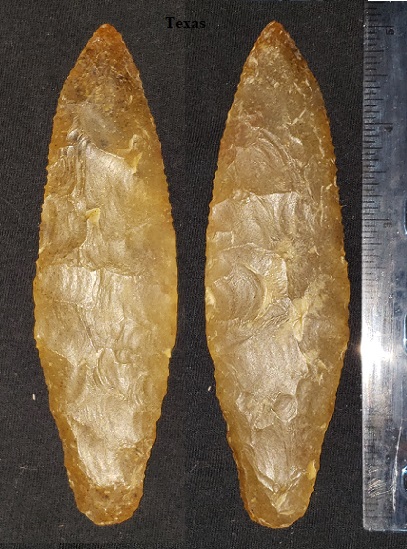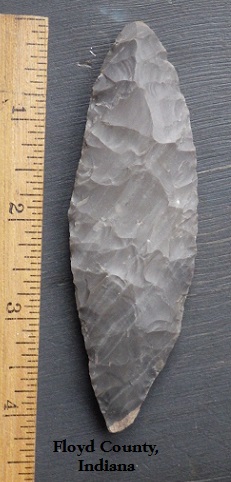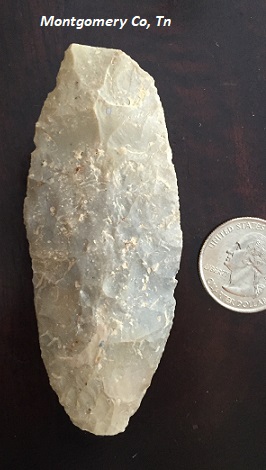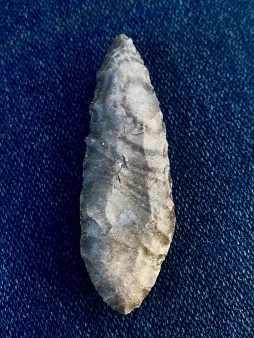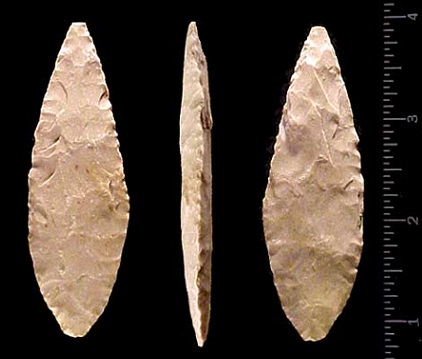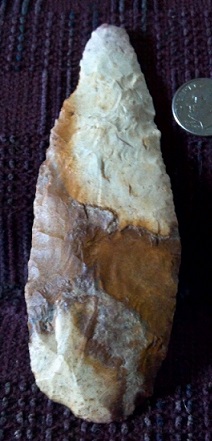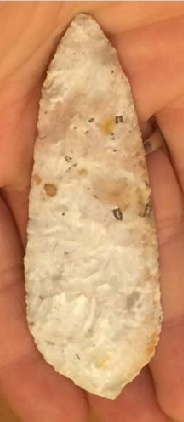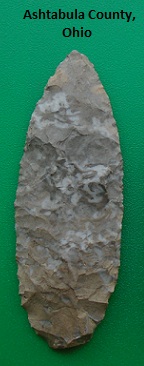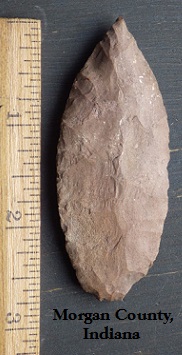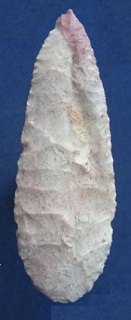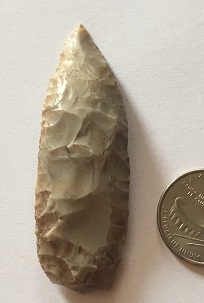Name Details:
Named By:
Richard S. MacNeish (Lerma Pointed)
James Cambron (Lerma Round Base)
Named For:
Date Identified: 1954 / 1969
Type Site: Canyon Diablo Site, Tamaulipas, Mexico
Lerma
Cluster:
Commonly Utilized Material:
Date:
Cultural Period:
10,000 - 5,000 B.P.
Transitional Paleo to Middle Archaic
Early Holocene to Neoglacial
Glacial Period:
Culture:
Outline is Representative of Size and Shape:
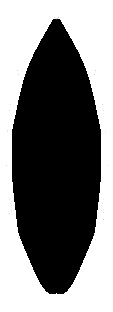
Lerma Pointed
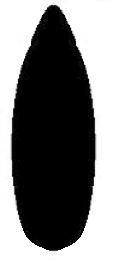
Lerma Round Base
Description of Physical Characteristics and Flaking Pattern:
This is a medium to large
ovoid point with a flattened to elliptical or diamond cross section. The blade is excurvate
with the widest portion of the blade commonly being below the midpoint. Some examples have parallel sides.
Serrating may be present. The blade is generally straight at the hafting region. The base may vary from convex to having a pointed base. The
hafting area is commonly ground 10 to 30 mm from base. However,
some examples lack any hafting region grinding. The flaking pattern may vary from parallel or oblique transverse in early examples to random flaking.
This point is made with broad percussion flaking finished with finer
pressure flaking along the edges.
Size Measurements: Total Length - 40 to 104 mm (65 to 75 mm average), Width -
15 to 33 mm (21 to 24 mm average), Thickness - 7 to 14 mm.
Distribution:
Distribution Comments:
This point is most commonly found from
northern Mexico into Texas, the Mississippi River Valley and into the Ohio River Valley and Tennessee River Valley (red). This point has infrequently
been reported into the yellow section. Lerma points have been
reported in the Tehuacacan Valley, Iztapan mammoth in the Federal
Districk of Mexico, at San Nicolas rock shelter in Queretaro, and
associated witht he Lerma Culture of Tamaulipas. Lerma points have
been reported in Venezuela, Ecuador, Peru, and Chile.
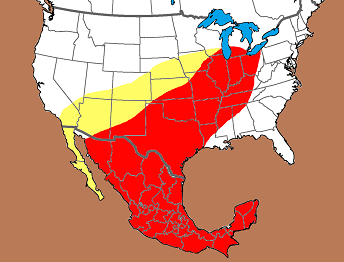
Similar Points:
Abasolo, Adena Blade, Agate Basin, Abasolo, Angostura, Burroughs, Catan, Chiconautla, Covington, Datil, Desmuke, Harahey, Guilford, Lermoide, Nebo Hill, North, Pelona, Refugio, Sedalia, Snake Creek, Tennessee River, Tennessee Saw, Zacatenco Additional Comments:
These points are found over a great area of
distribution. Suhm and Krieger (1954) suggest that these points
appeared earliest in southern Tamaulipas and spread northward. Bell
(1958) notes that points found in Texas were consistent with projectile
point rather than knifes. He notes that the symmetry, thinness, and
steep edges would make them unsuitable for knifes. However, throughout
Oklahoma and the Mississippi River Valley similar forms tend to be thicker
and are more consistent with knifes. He argues that true Lerma points
may be isolated to Texas and Mexico while similar forms outside this region
are knifes and may not be a true Lerma point.
Other points in this Cluster:
Point Validity: Valid Type
MacNeish was
a pioneering anthropologist who began his career studying the archeology of the Northern Plains and Canada. He was most notable for his excavations and studies at Tamaulipas Mexico. This type has been references in professional publications and is considered a valid type.
.
Age Details:
References: (See Reference Page, Entry Number):
8,
12,
23, 30, 115, 167, 177, 189, 190, W11, W18
Lerma Projectile Point, Lerma Arrowhead
 Lerma Pointed
Lerma Pointed Lerma Pointed
Lerma Pointed
